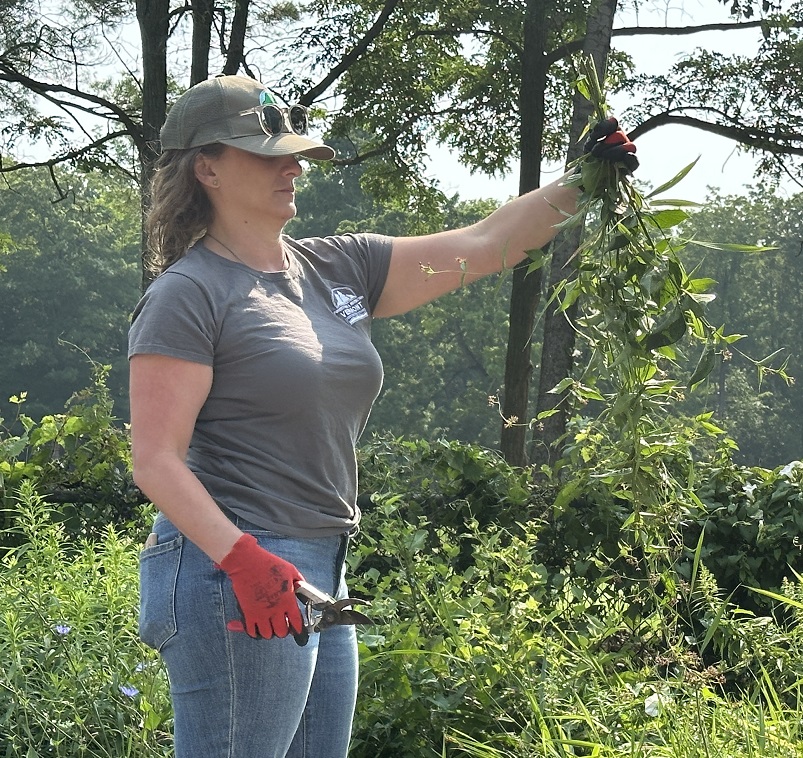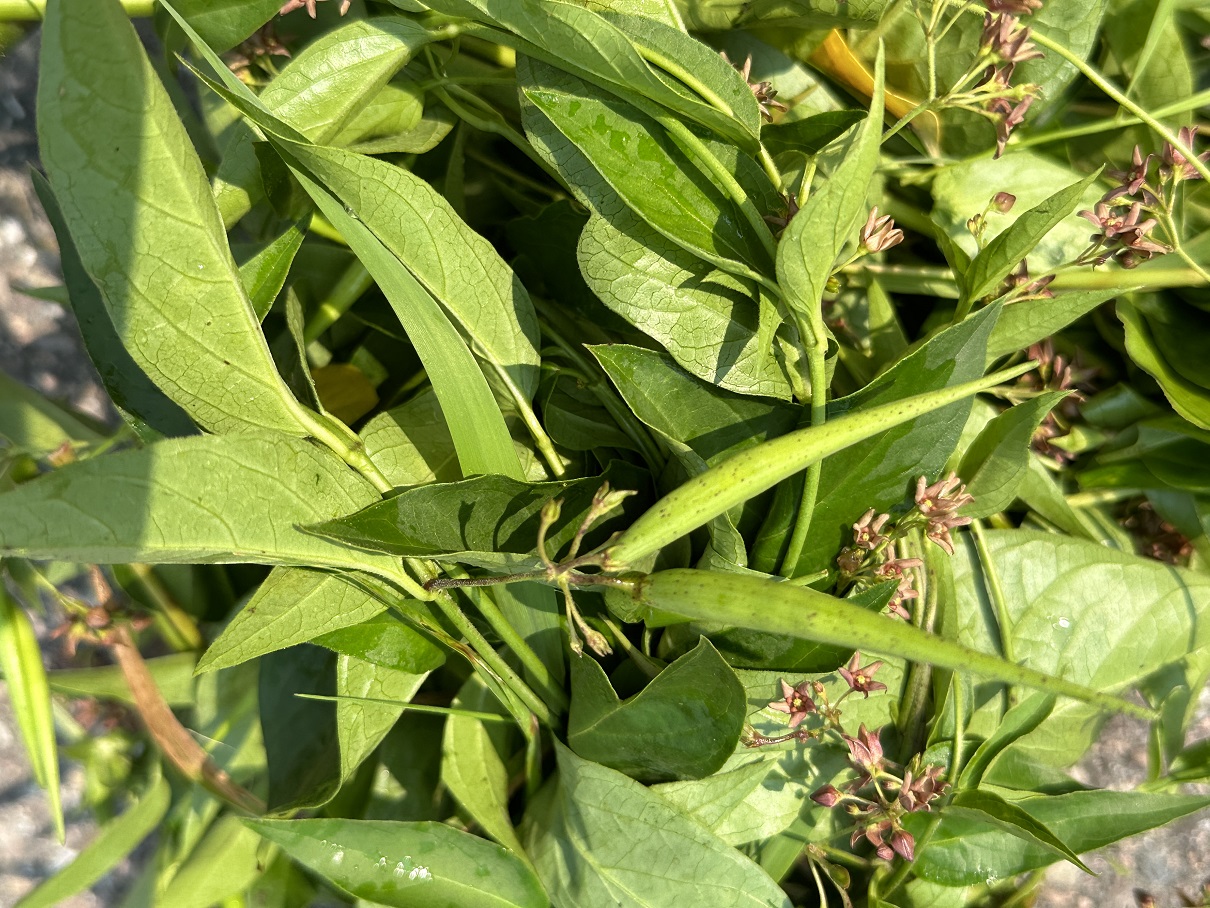
Earlier this summer, Vermont officials confirmed the discovery of the Pale swallowwort (Vincetoxicum rossicum) in Burlington, Vermont. Pale swallowwort is considered a class A noxious weed, which “means any noxious weed is not native to the State, not currently known to occur in the State on the date of listing and poses a serious threat to the State.”
Generally, noxious weeds are non-native plants that are considered by the state to pose a threat to Vermont’s environment, agriculture, property, economy, or public health (according to Vermont’s Noxious Weed Quarantine). There are two species of swallowwort on the Noxious Weed List: Pale swallowwort, and a related species, black swallowwort (Vincetoxicum nigrum), classified as a class B noxious weed which means “any noxious weed that is not native to the state, is of limited distribution statewide, and poses a serious threat to the State, or any other designated noxious weed being managed to reduce its occurrence and impact in the State,… .”

The plant itself has a vining habit, twisting around other nearby plants to heights of 4-6 feet. Its glossy, dark green leaves are lance shaped and have an opposite arrangement. Flowers are described as “pink to maroon”[1] or magenta.[2] They make seed pods similar to milkweed, but light green, smooth, and pointed (~3-4in by 2-3 in wide). Just like milkweed, these pods split when mature to release many tufted seeds that easily catch the wind and disperse great distances. It can be a challenge to tell pale from black swallowwort. Pale tends to have lighter flowers, but the species have some over-lap in the color range. The surest tell is that pale swallowwort flowers have tiny hairs, while black do not. Of course, it doesn’t hurt to take out any black swallowwort you see while you’re at it!
Don’t let the plant’s pleasing colors and climbing habit fool you though- there’s a reason both species are on the noxious weed list. Several reasons, actually. They are particularly nasty when it comes to crowding out native plants. Swallowworts are shade tolerant, which allows them to crowd out native plants even in well-established habitats. They can release chemicals from their roots which stop other plants from growing, reducing their competition and making it even harder for other species to grow. Furthermore, they pose a danger to butterflies. Monarchs, which are known for laying eggs on milkweed (also in the Apocynaceae family) will lay eggs on swallowwort. The caterpillars which hatch on Vincetoxicum do not survive. All of these factors combined make swallowwort a major danger for Vermont ecosystems.
Controlling pale swallowwort is no easy task. The only way to physically remove the plant is to completely remove all of its roots. This involves careful digging because swallowwort sprouts back from root fragments- making this method impractical for large infestations. Small populations can be treated with the appropriate herbicide following label instructions or contact a pesticide company for assistance. Cutting can prevent seed formation, but only if timed right. Mowing when seed pods begin forming can rob the plant of its chance to put out seeds for the season. Any earlier, and the plant can re-sprout. Any later, and mowing can spread the plants by throwing mature seeds right into the wind, where they can fly for miles.[3] Unfortunately, when seed pods are open it makes removal riskier. Late in the summer, it is best to hand cut any seed pods from the plant. Removal of just seed pods won’t completely stop the spread of the plant, but it can reduce the distance it travels by eliminating wind-borne dispersal. The cut plant materials can be placed in heavy duty plastic bags and tossed with regular garbage- composting may allow plants to spread through root fragments or seeds, and burning can aid seed dispersion! It’s highly recommended that a person wears gloves and long sleeves when handling the plant to avoid exposure to the plant’s sap.
When state officials first received reports of pale swallowwort in Burlington, they hoped that the population would be confined to a small area, but after a survey it was found in multiple locations in Burlington and elsewhere. But it’s not too late to respond. Communities banded together to persistently work on reducing the spread of similar invasives and have made a difference. The town of Ogunquit, Maine, has held “pod-picking days” for several years now to reduce the spread of the related black swallowwort.[4] While pulling is not generally considered a viable option for controlling a large population (even in a relatively small area, like Ogunquit’s marginal strip), the event ends in removal of hundreds of pounds of swallowwort seed pods. Years of consistent control by Ogunquit’s community has likely prevented millions of new seeds from sprouting; their example has shown the power that the community has to control such invasive populations through coordinated and persistent effort.
Resources:
